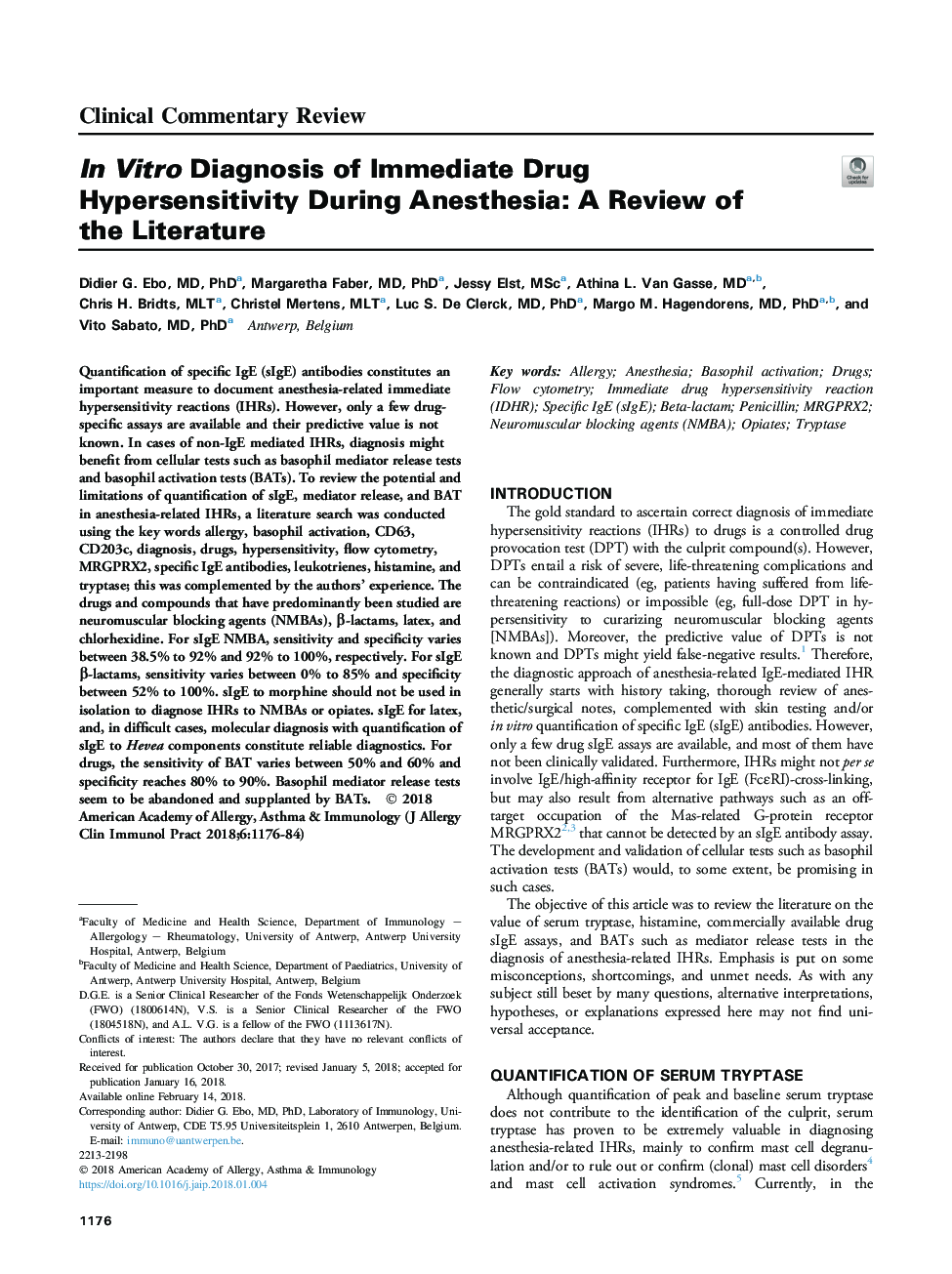| Article ID | Journal | Published Year | Pages | File Type |
|---|---|---|---|---|
| 8714076 | The Journal of Allergy and Clinical Immunology: In Practice | 2018 | 9 Pages |
Abstract
Quantification of specific IgE (sIgE) antibodies constitutes an important measure to document anesthesia-related immediate hypersensitivity reactions (IHRs). However, only a few drug-specific assays are available and their predictive value is not known. In cases of non-IgE mediated IHRs, diagnosis might benefit from cellular tests such as basophil mediator release tests and basophil activation tests (BATs). To review the potential and limitations of quantification of sIgE, mediator release, and BAT in anesthesia-related IHRs, a literature search was conducted using the key words allergy, basophil activation, CD63, CD203c, diagnosis, drugs, hypersensitivity, flow cytometry, MRGPRX2, specific IgE antibodies, leukotrienes, histamine, and tryptase; this was complemented by the authors' experience. The drugs and compounds that have predominantly been studied are neuromuscular blocking agents (NMBAs), β-lactams, latex, and chlorhexidine. For sIgE NMBA, sensitivity and specificity varies between 38.5% to 92% and 92% to 100%, respectively. For sIgE β-lactams, sensitivity varies between 0% to 85% and specificity between 52% to 100%. sIgE to morphine should not be used in isolation to diagnose IHRs to NMBAs or opiates. sIgE for latex, and, in difficult cases, molecular diagnosis with quantification of sIgE to Hevea components constitute reliable diagnostics. For drugs, the sensitivity of BAT varies between 50% and 60% and specificity reaches 80% to 90%. Basophil mediator release tests seem to be abandoned and supplanted by BATs.
Keywords
Related Topics
Life Sciences
Immunology and Microbiology
Immunology
Authors
Didier G. MD, PhD, Margaretha MD, PhD, Jessy MSc, Athina L. MD, Chris H. MLT, Christel MLT, Luc S. MD, PhD, Margo M. MD, PhD, Vito MD, PhD,
